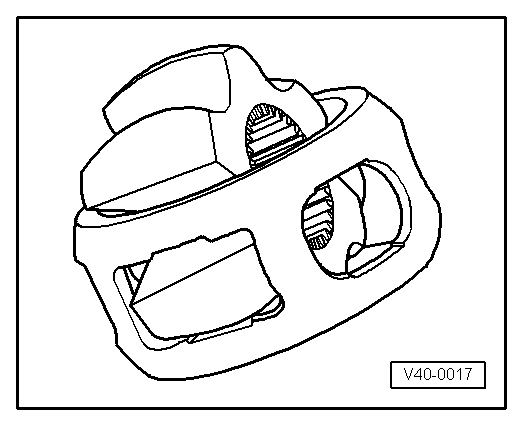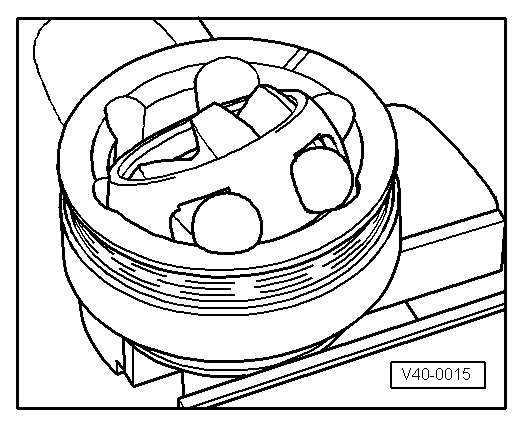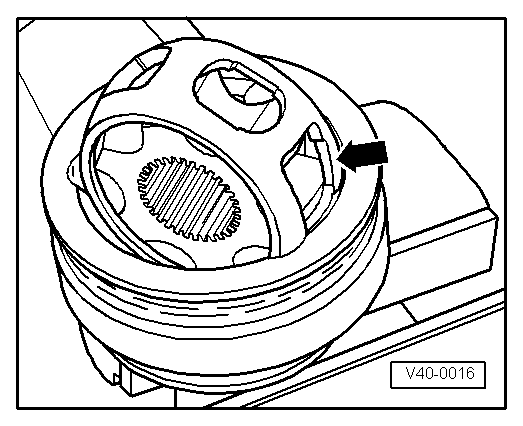| –
| Swing segment of hub into square cage window. |
| –
| Remove the hub from the cage. |
| The six balls for each joint belong to a tolerance group. Check stub axle, hub, cage and balls for small indentations (pitting) and traces of seizing. Excessive backlash in the joint will cause knocking or jolts under load change. Smoothing and traces of wear of the balls are no reason to change the joint. |
| –
| Insert half of the recommended amount of grease (40 grams) on the casing of the joint. |
| –
| Fit cage with hub into joint body. |
| –
| Press in opposing balls one after the other; the original position of the hub relative to the cage and joint body must be restored. |
| –
| Fit new retaining ring into hub. |
| –
| Distribute remaining grease in boot. |
|
|

|





